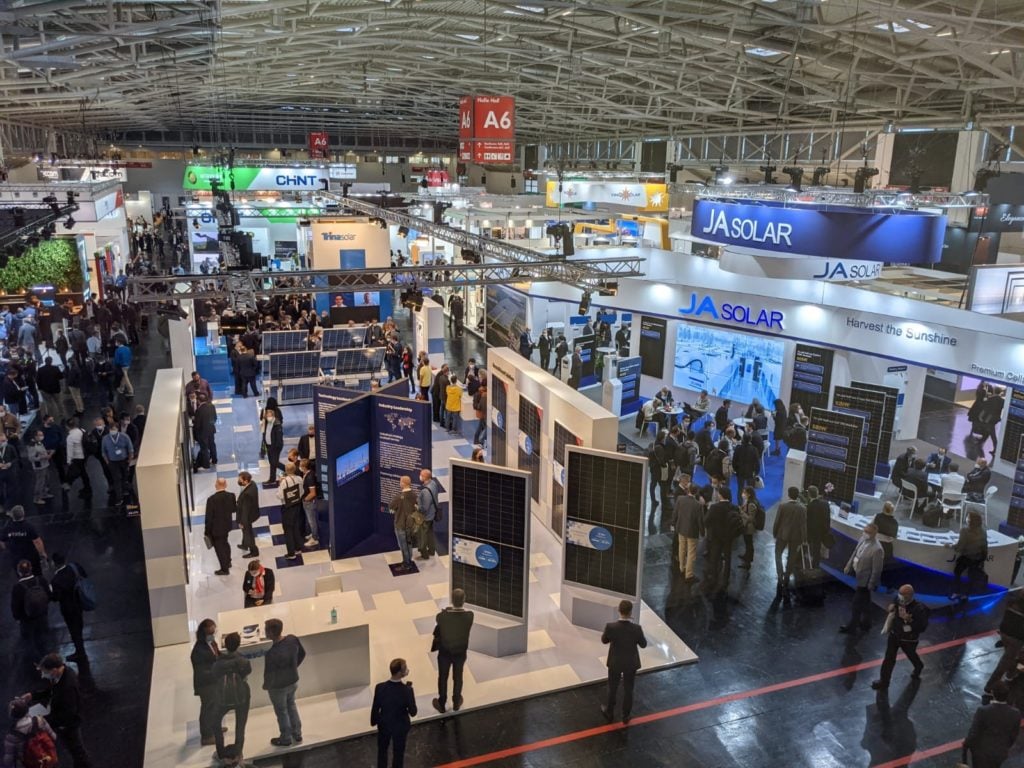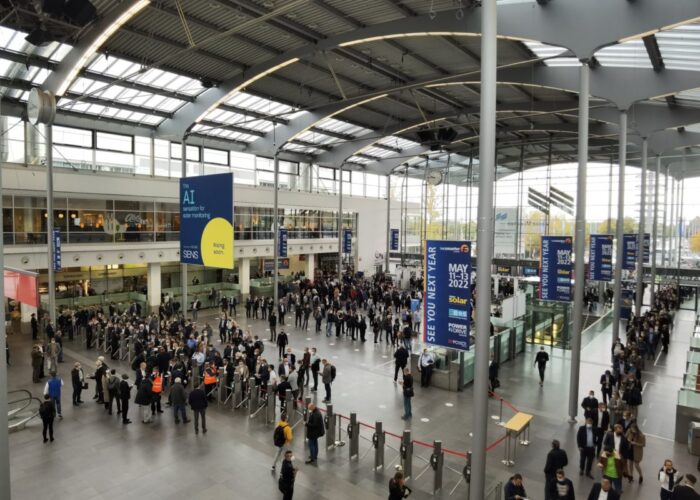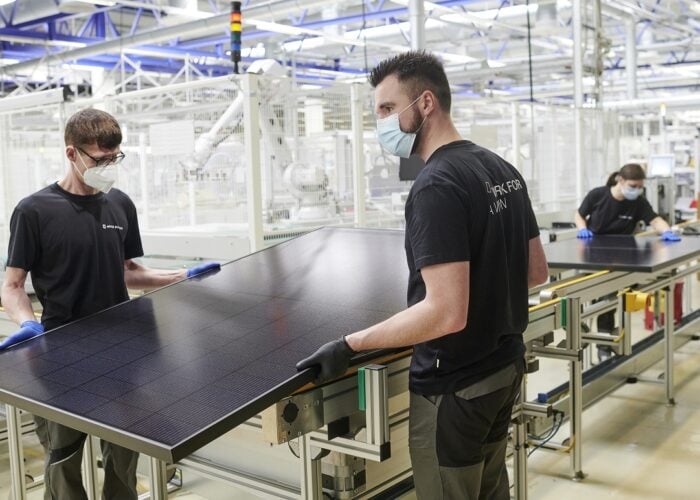
Last week’s Intersolar Europe 2021 exhibition marked the return of Europe’s largest solar tradeshow after a pandemic-triggered hiatus of more than two years. Here’s some of the key takeaways that PV Tech gleaned from the show floor.
Live exhibitions are back – and the industry is thrilled
There was a palpable buzz around the Messe München last week, one that not even Tuesday morning’s rain and COVID-19 protections could diminish. That buzz lasted long into the week, with many exhibitors and delegates that PV Tech spoke to on the show floor enlivened by the crowd. For many it felt like something of a hallmark moment for Europe’s solar industry after what has been an undeniably difficult past 18 months; European solar is back doing business and there’s little that now stands in its way. Yes, the exhibition was smaller than usual and some of the usual names absent, but it did not visibly detract from an event that, for those who were there, certainly delivered.
Unlock unlimited access for 12 whole months of distinctive global analysis
Photovoltaics International is now included.
- Regular insight and analysis of the industry’s biggest developments
- In-depth interviews with the industry’s leading figures
- Unlimited digital access to the PV Tech Power journal catalogue
- Unlimited digital access to the Photovoltaics International journal catalogue
- Access to more than 1,000 technical papers
- Discounts on Solar Media’s portfolio of events, in-person and virtual
Europe wants European-made products
Amidst a multi-faceted upstream crisis that continues to play out, it is now abundantly clear that solar manufacturing must diversify away its current geographical monopoly if global solar deployment is to fulfil its lofty potential. This will require the establishment of an entire solar ecosystem in Europe and, thankfully, it would appear there is no shortage of demand for solar products and components made in Europe.
Meyer Burger, exhibiting at Intersolar for the first time as a module manufacturer, is sold out into next year and indicated its customers were willing to pay something of a premium, with gigawatt-scale expansion plans being pursued, and Italian inverter manufacturer FIMER told PV Tech that demand for its products has spiked amidst concern over shipping and logistics issues affecting imports from China. Maxeon, while not exhibiting at the show, also spoke to PV Tech of its intent to cater for demand perhaps more specific to European markets using products made at its facility in France.
While Europe is some way off having a thriving upstream sector – and there was plenty of discussion around the hurdles that remain and what needs to happen for those to be resolved – Europe’s PV market definitively would buy ‘Made in Europe’ if given the chance.
Diversification is critical in today’s solar market
Whether its selling complementary products, targeting new geographies or qualifying new suppliers, diversification is now absolutely critical to your success as a stakeholder in today’s modern solar market. Speaking to PV Tech last week, SolarEdge CMO Yogev Barak said the manufacturer was working to qualify new component providers – and tweak the design of its products accordingly – in a bid to mitigate the ongoing supply chain crisis gripping global economies. Meanwhile, Trina Solar’s stand was one not just geared towards promoting its Vertex range of panels, but also its Agile line of trackers and Elementa battery energy storage product. In much the same way that developers are diversifying their supply chains to derisk, manufacturers and developers alike are adding as many feathers to their bow as practical. Failure to do so, as recent months have highlighted acutely, runs the risk of being left behind.
Solar finding its feet at the centre of net zero strategies
Solar PV may have experienced meteoric growth in recent years, but there’s still much to do if decarbonisation aims are to be met the world over. Intersolar Europe 2021, timed as it was just a month before COP26 in Glasgow, Scotland, highlighted how solar PV is now reaching beyond the power sector in its decarbonisation mission and helping eliminate emissions from harder to abate industrial sectors, such as heavy industry and transport. Green hydrogen has been bubbling away quietly for some time, but is now firmly a part of many nations’ decarbonisation plans and solar PV – as the Intersolar 2021 forum heard – is critical to this industry’s future.
Meanwhile, Intersolar’s partner events such as ees Europe, Power 2 Drive and, new this year, Empower Europe, highlighted the contributing role solar and storage, emobility and energy flexibility technologies are playing in helping to manage and navigate the path towards a zero-carbon future.
Solar, evidently, is now at the very centre of the world’s push towards net zero and there was much talk on the show floor around expectations for the generation class to be the subject of much discussion in Glasgow next month.
Consumer demands are changing and solar is changing with it
Given that there has been more than two years of technological development since Intersolar Europe last took place, it’s perhaps striking just how far solar modules have come – both in power output and just in sheer size – in that time. Stands on the show floor were dominated by 72 or 78-cell panels in excess of 2 metres tall, but there was just as much maturation at the other end of the spectrum, and this is being driven by a more engaged consumer.
A handful of solar roof tile products garnered attention while there were enough building integrated PV options being exhibited to make the industry ponder whether now is – finally – time for the technology to make its long-anticipated breakthrough. Elsewhere consumer-facing apps which broke down generation and consumption into simple-to-follow metrics were common, and ease of use was central to almost every new product. Product designs are slicker and, in many cases, customisable, allowing consumers to pick and choose between different facias, rather than just the typical white goods features.
All of the above are designed to bring solar to the masses, introducing it to the next several million more households per country to build on its success to date.



